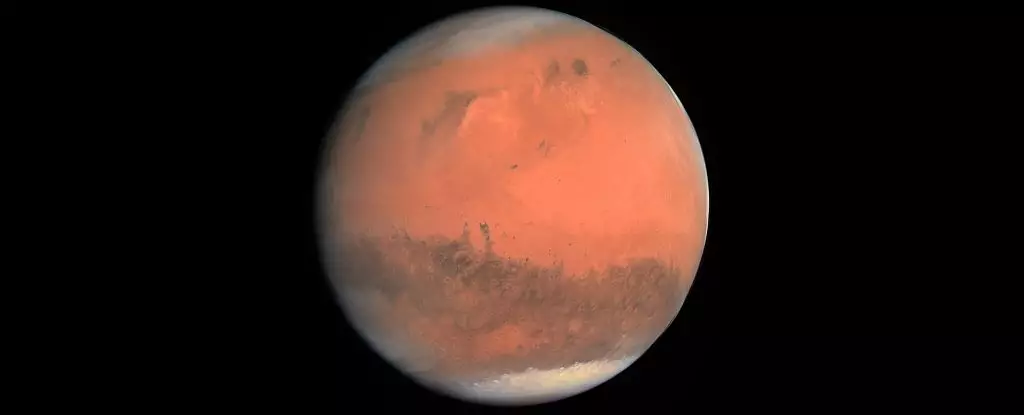Mars, often referred to as the “Red Planet,” captivates both scientists and stargazers with its striking reddish hue. This distinctive coloration has long been attributed to the presence of iron oxide or rust on its surface. However, a recent study has proposed a significant shift in our understanding of how this rust came to be. Researchers have indicated that the mechanism producing Mars’s reddish color is closely tied to the presence of water, challenging the long-held belief that dry conditions predominated during the planet’s rusting processes. This revelation not only alters our perception of Martian geology but also invites further exploration into the planet’s watery past.
Planetary geologist Adomas Valantinas from Brown University underscores this transformation in our understanding of Mars in light of new findings. Traditionally, Martian rust was attributed primarily to hematite, an iron oxide that forms in dry environments. It was believed that this mineral emerged long after Mars had lost its surface water. However, the latest investigation suggests a profound alternative: the presence of ferrihydrite, a type of iron oxide mineral that forms in the presence of cool liquid water, may play a more critical role in explaining the planet’s iconic red coloring.
Valantinas and his team aimed to replicate Martian dust under laboratory conditions, mixing various types of iron oxides to simulate local geological features. Their research proposed that ferrihydrite, when combined with volcanic basalt, closely resembled the minerals observed on Mars by orbiting spacecraft. This finding refutes the earlier reliance on hematite alone, marking a potential paradigm shift in the understanding of Martian mineralogy.
In many respects, water is the key player in Mars’s geological narrative. Within the annals of planetary science, abundant evidence has solidified the idea that liquid water once flowed across the Martian landscape. Rovers and orbiters have meticulously gathered data, hinting at a past rich in aqueous activity. However, the apparent absence of water-related minerals in the planet’s surface dust raised significant questions. The previous consensus—claiming that minerals responsible for the planet’s hue accrued in a parched ambience—seemed to contradict the expansive evidence for a soggy past.
The recent insights into ferrihydrite provide a reconceptualization of this historical narrative. By confirming that ferrihydrite could only form in a watery environment, researchers propose that significant oxidation occurred while water still graced the surface of Mars. This paradigm shift implies that iron minerals were oxidized more recently than previously believed, suggesting a dynamic history for the planet where water played a pivotal role.
The implications of this research extend beyond mere mineral composition. They invite scientists to rethink the entire geological history of Mars. If ferrihydrite contributed to the formation of Martian dust while water was still present, the timelines of geological events on Mars could dramatically change. As Valantinas acknowledges, “Mars is still the red planet, but our understanding of why it is red has been transformed.”
Moreover, as space agencies prepare for future missions to collect Martian samples, this refined understanding will shape the kinds of analyses scientists will perform. Recognizing that ferrihydrite is stable under current Martian conditions may provide crucial insights into the planet’s present-day environment, as researchers plan to extract and study samples that lie dormant in canisters on Mars.
As we stand at the threshold of new discoveries, perhaps our exploration of the Martian landscape will illuminate the intricacies of its geological history even further. Studying the dynamics of water on Mars—past and present—offers an exhilarating glimpse into the planet’s evolution. As research progresses, we may realize that Mars’s signature rust is not merely a symbol of aridity, but a vivid reminder of a world shaped by aquatic forces. The quest to uncover Mars’s secrets continues, and each new insight brings us closer to understanding our enigmatic neighbor in the Solar System.

